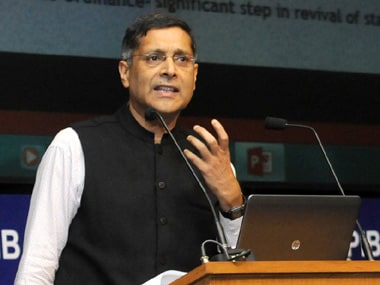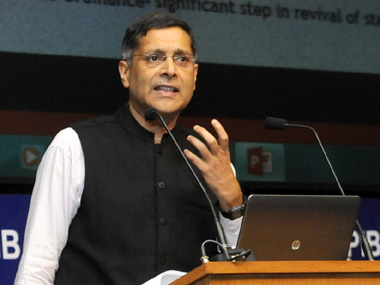The Chief Economic Advisor Arvind Subramanian-led panel today submitted a report on the ambitious Goods and Tax Regime to Finance Minister Arun Jaitley offering recommendations on how a common national market should be created. Subramanian also predicted that the “Indian GST will be cleanest dual VAT, combining best of centralised and de-centralised models.”[caption id=“attachment_2399194” align=“alignleft” width=“380”]  Chief economic advisor Arvind Subramanian. Image courtesy PIB[/caption] “The country has a historic opportunity with the GST. It will strengthen the country’s tax institutions, get rid of barriers within states and create a common market,” Subramanian said at a press conference in New Delhi. GST has remained one of the most contentious and long-winded issues in the history of India’s finances with a consensus among all stakeholders perennially remaining on slippery grounds. Now the focus will shift to Parliament on Monday which is havibg its Winter Session as the Prime Minister Narendra Modi-led government is hoping to placate the Congress by incorporating the demands by the largest Opposition party. It is vital for the government to get the GST Bill passed in this session itself failing which the regime would miss its 1 April 2016 deadline. “The tax will do away with a wide range of levies and taxes and introduce a single tax in its place. While a single rate on products and services will facilitate free trade across states, the GST’s value-added structure will do away with the problem of cascading tax (or tax on tax)."— a CNBC-TV18 report said. The panel chief said that three different methods were discussed threadbare to calculate the crucial revenue-neutral rate – the rate at which there will be no loss to state and Central governments. “This was a technical exercise and we took into account methods using direct taxes, indirect taxes and an approach suggested by the NIPFP,” Subramanian said. “The committee decided to provide a range for the GST rate for various products and services: from 12 percent to 40 percent (the higher rate being applicable for select products such as luxury cars or tobacco products, etc). However, the key revenue neutral rate suggested by the CEA panel stood at 15-15.5 percent."— the CNBC-TV18 report said. The panel kept the standard GST rate at 17-18 percent at which most products would likely be taxed. However, as of now real estate, electricity and alcohol and petroleum products are kept out of the GST regime. It also suggested to the government to scrap the proposal to levy a 1 percent inter-state tax on transfer of goods. However, the CEA-led panel did not favour specifying GST rate in the Constitutional Amendment Bill. Calling a GST regime as a boost for the government’s Make in India programme, he said, “GST will improve governance and facilitate Make in India by making one India.”
The panel kept the standard GST rate at 17-18 percent at which most products would likely be taxed.
Advertisement
End of Article


)

)
)
)
)
)
)
)
)



